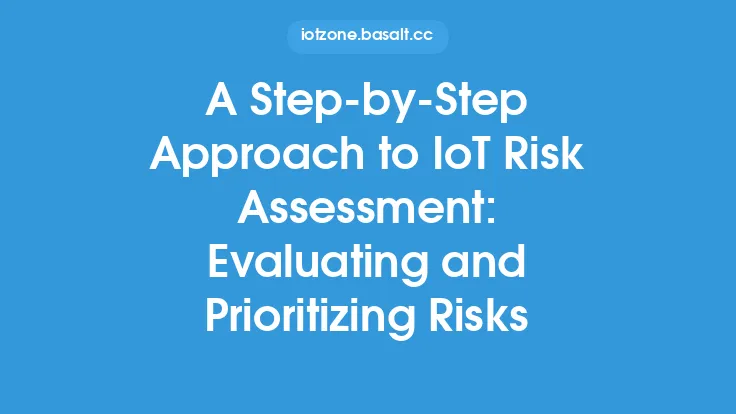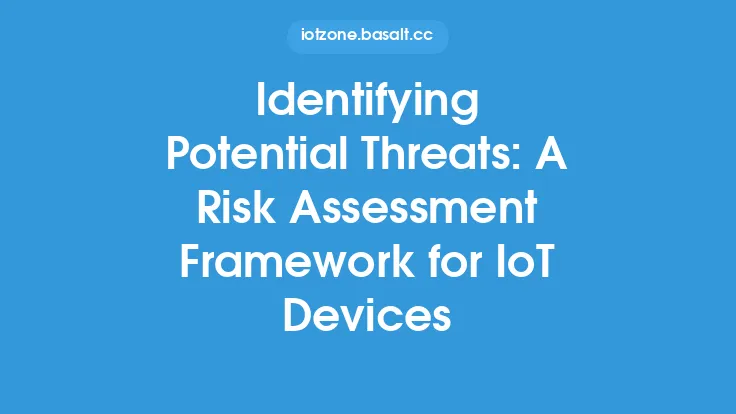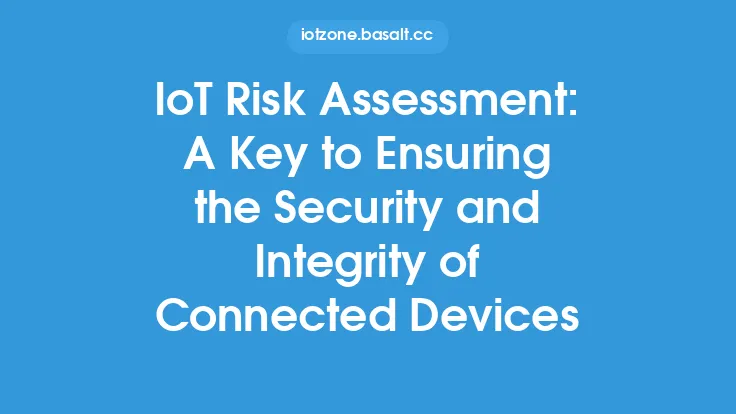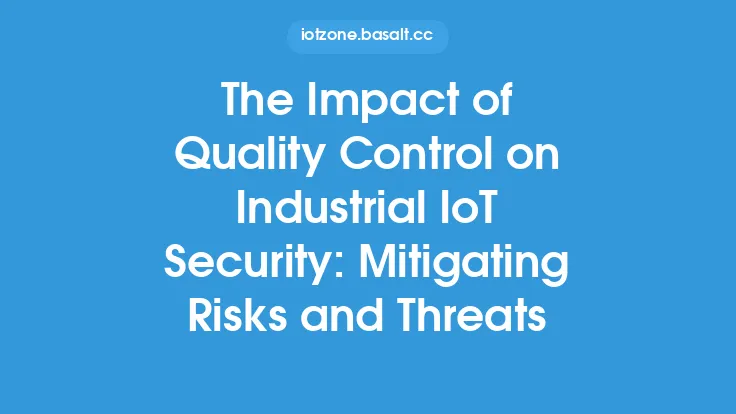The increasing number of Internet of Things (IoT) devices has led to a significant rise in the attack surface, making it essential to identify and prioritize potential vulnerabilities. IoT vulnerability assessment is a critical process that helps organizations understand the risks associated with their IoT devices and take proactive measures to mitigate them. In this article, we will delve into the world of IoT vulnerability assessment, exploring the various techniques, tools, and methodologies used to identify and prioritize risks.
Introduction to IoT Vulnerability Assessment
IoT vulnerability assessment is a systematic process that involves identifying, analyzing, and prioritizing potential vulnerabilities in IoT devices and systems. The goal of this process is to provide a comprehensive understanding of the risks associated with IoT devices and to identify areas that require immediate attention. IoT vulnerability assessment involves a combination of manual and automated testing, including network scanning, vulnerability scanning, and penetration testing. The assessment process helps organizations to identify vulnerabilities, such as buffer overflows, SQL injection, and cross-site scripting (XSS), that can be exploited by attackers to gain unauthorized access to IoT devices and systems.
Types of IoT Vulnerabilities
IoT devices and systems are susceptible to various types of vulnerabilities, including hardware, software, and firmware vulnerabilities. Hardware vulnerabilities refer to flaws in the physical components of IoT devices, such as microcontrollers, sensors, and actuators. Software vulnerabilities, on the other hand, refer to flaws in the operating system, applications, and protocols used by IoT devices. Firmware vulnerabilities refer to flaws in the software that controls the hardware components of IoT devices. Some common types of IoT vulnerabilities include:
- Buffer overflow vulnerabilities: These occur when more data is written to a buffer than it is designed to hold, causing the extra data to spill over into adjacent areas of memory.
- SQL injection vulnerabilities: These occur when an attacker is able to inject malicious SQL code into a database, allowing them to access, modify, or delete sensitive data.
- Cross-site scripting (XSS) vulnerabilities: These occur when an attacker is able to inject malicious code into a website, allowing them to steal user data or take control of the user's session.
- Denial of Service (DoS) vulnerabilities: These occur when an attacker is able to flood a network or system with traffic, causing it to become unavailable to users.
IoT Vulnerability Assessment Methodologies
There are several methodologies that can be used to perform IoT vulnerability assessments, including:
- NIST Special Publication 800-53: This provides a comprehensive framework for conducting vulnerability assessments, including a list of security controls and techniques for identifying and mitigating vulnerabilities.
- OWASP IoT Security Guidance: This provides a comprehensive guide to IoT security, including a list of potential vulnerabilities and techniques for identifying and mitigating them.
- ISO/IEC 27001: This provides a comprehensive framework for managing information security, including a list of security controls and techniques for identifying and mitigating vulnerabilities.
Tools and Techniques for IoT Vulnerability Assessment
There are several tools and techniques that can be used to perform IoT vulnerability assessments, including:
- Network scanning tools: These tools are used to identify open ports and services on IoT devices and systems.
- Vulnerability scanning tools: These tools are used to identify potential vulnerabilities in IoT devices and systems.
- Penetration testing tools: These tools are used to simulate attacks on IoT devices and systems, helping to identify potential vulnerabilities and weaknesses.
- Firmware analysis tools: These tools are used to analyze the firmware of IoT devices, helping to identify potential vulnerabilities and weaknesses.
- Protocol analysis tools: These tools are used to analyze the protocols used by IoT devices and systems, helping to identify potential vulnerabilities and weaknesses.
Prioritizing IoT Vulnerabilities
Once potential vulnerabilities have been identified, it is essential to prioritize them based on their severity and potential impact. This can be done using a variety of techniques, including:
- CVSS (Common Vulnerability Scoring System): This provides a comprehensive framework for scoring vulnerabilities based on their severity and potential impact.
- NIST Special Publication 800-30: This provides a comprehensive framework for conducting risk assessments, including a list of techniques for prioritizing vulnerabilities.
- ISO/IEC 27005: This provides a comprehensive framework for managing information security risks, including a list of techniques for prioritizing vulnerabilities.
Remediation and Mitigation of IoT Vulnerabilities
Once potential vulnerabilities have been identified and prioritized, it is essential to remediate and mitigate them. This can be done using a variety of techniques, including:
- Patching: This involves applying patches to IoT devices and systems to fix known vulnerabilities.
- Configuration changes: This involves changing the configuration of IoT devices and systems to reduce the risk of exploitation.
- Network segmentation: This involves segmenting IoT devices and systems into separate networks to reduce the risk of lateral movement.
- Encryption: This involves encrypting data transmitted by IoT devices and systems to reduce the risk of interception.
- Authentication and authorization: This involves implementing strong authentication and authorization mechanisms to reduce the risk of unauthorized access.
Continuous Monitoring and Vulnerability Management
IoT vulnerability assessment is not a one-time process, but rather an ongoing process that requires continuous monitoring and vulnerability management. This can be done using a variety of techniques, including:
- Continuous vulnerability scanning: This involves regularly scanning IoT devices and systems for potential vulnerabilities.
- Penetration testing: This involves regularly simulating attacks on IoT devices and systems to identify potential vulnerabilities and weaknesses.
- Firmware updates: This involves regularly updating the firmware of IoT devices to fix known vulnerabilities and improve security.
- Protocol analysis: This involves regularly analyzing the protocols used by IoT devices and systems to identify potential vulnerabilities and weaknesses.
Conclusion
IoT vulnerability assessment is a critical process that helps organizations understand the risks associated with their IoT devices and take proactive measures to mitigate them. By using a combination of manual and automated testing, including network scanning, vulnerability scanning, and penetration testing, organizations can identify potential vulnerabilities and prioritize them based on their severity and potential impact. By remediating and mitigating identified vulnerabilities, organizations can reduce the risk of exploitation and improve the overall security posture of their IoT devices and systems. Continuous monitoring and vulnerability management are essential to ensuring the ongoing security of IoT devices and systems, and organizations should regularly scan for vulnerabilities, simulate attacks, and update firmware and protocols to stay ahead of potential threats.





